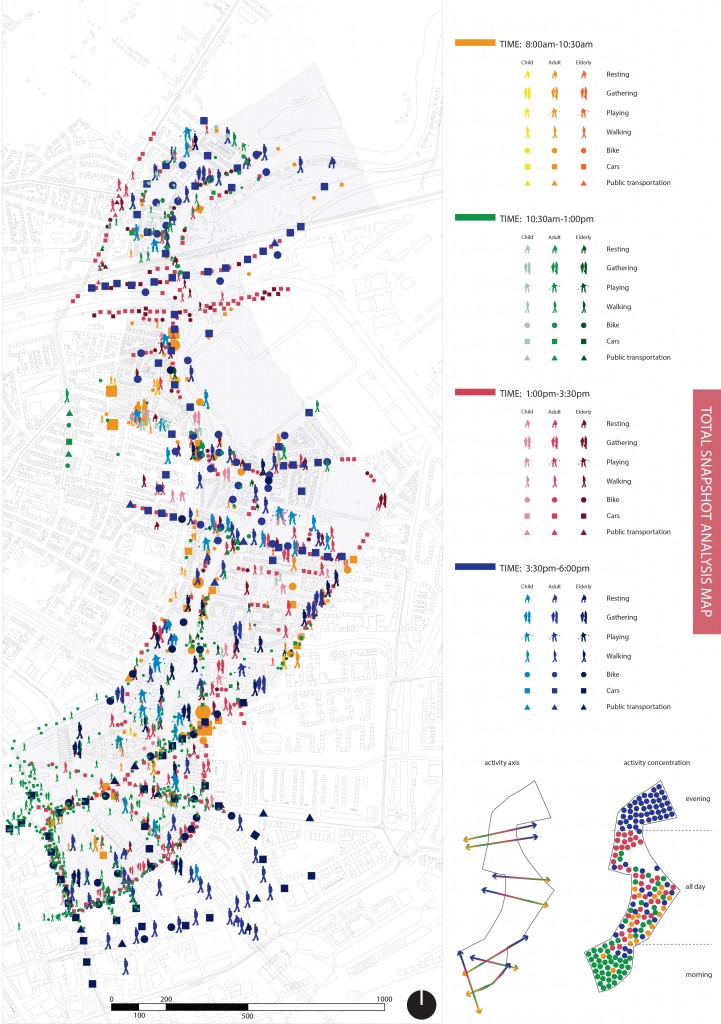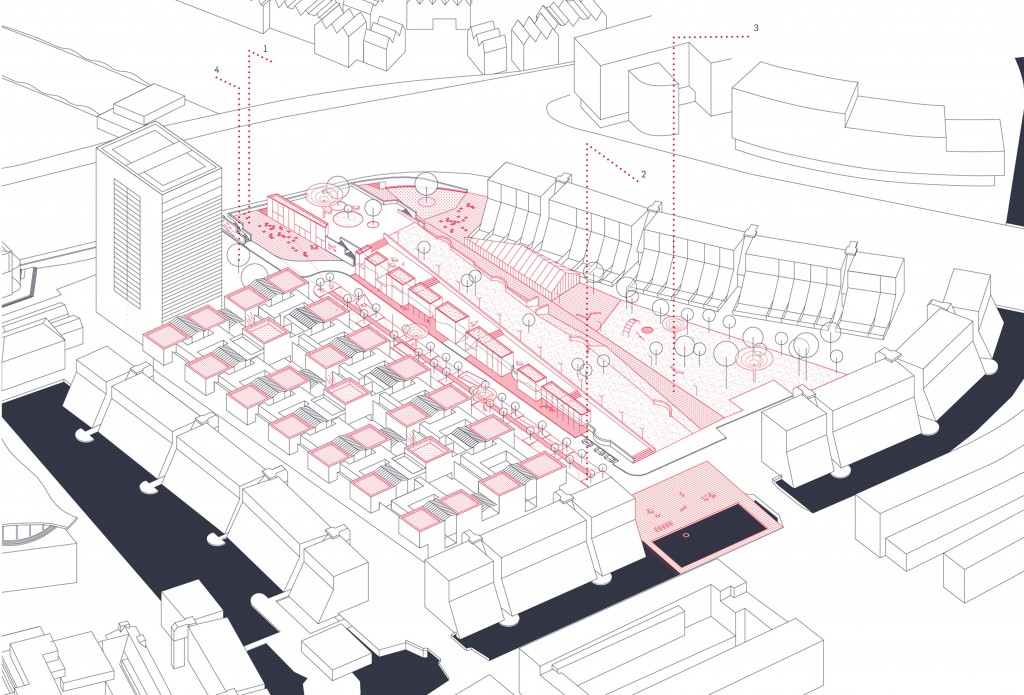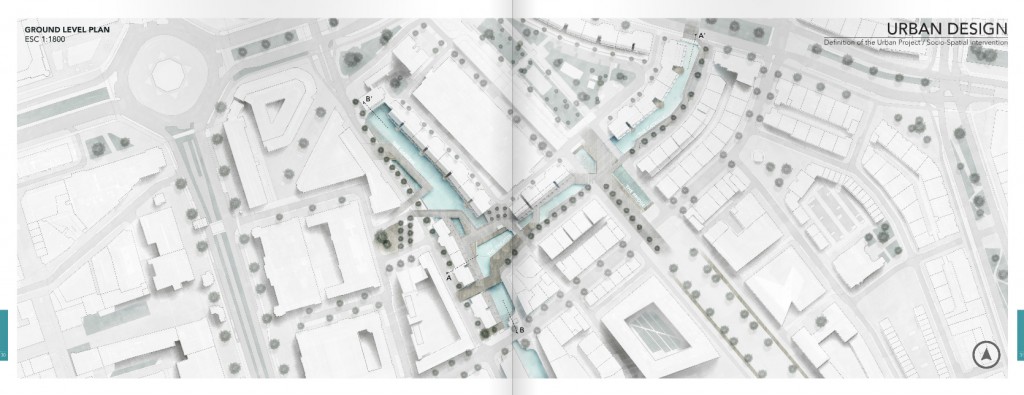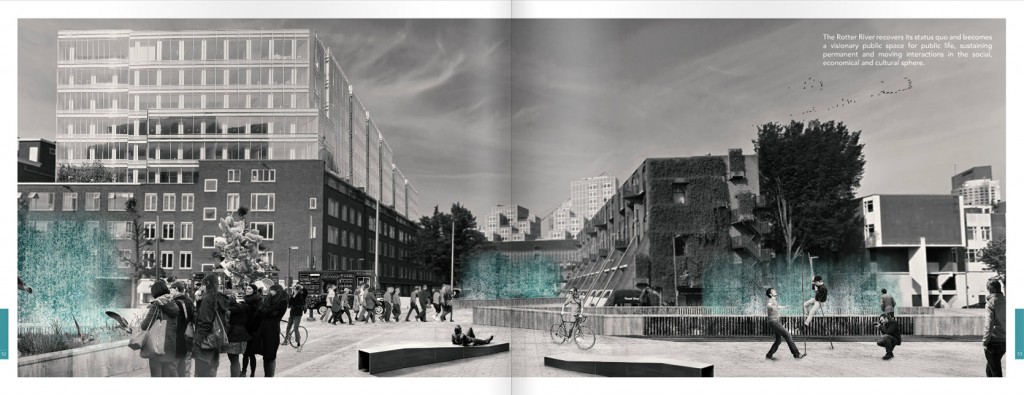Socio-Spatial Processes in Rotterdam
Challenging the City by means of Urban Design
Each year, collaboratively a mix of about 100 students have been challenged to improve the environment of people by strategically intervening in the urban fabric. They have been asked to do so in a sustainable and feasible way, and on a small scale. Next to a majority of urban designers and landscape architects, we’ve seen architects and planners joining the design teams too, and incidentally a social-geographer and a civil engineer. The multidisciplinary approach has added not only to the richness of the scope of solutions, but also and foremost to new understanding of the complex problems the city is facing.

Total Snapshot Analysis Map, supervised by Birgit Hausleitner (26 November 2014)
Over the years, different parts of Rotterdam North have been challenged. The peripheral urbanised river Rotte was the case of the last two years. The river is the name-giver of the city, yet the median of two troublesome neighbourhoods in transition. What is happening exactly? We have started with observations in the real: Who interacts? Who appropriates? Where is synergy? Where are conflicts? Etc… Then, everyone has returned to their desks to proceeds with mapping. What are the chances? Fieldwork and desk-analyses guide the individual design projects. The aim is to draw people’s uses and find their desires concerning public spaces in its conjunction to the built programmes. Designs manipulate the city’s lay-out. Designers shape the urban, with respect to the overview of requirements, demands and claims, and technical possibilities. Each one of them select materials and textures to support the manipulation. They add to the images of the city. Each project emphases different issues and/or a different location. All designs in the project aim to facilitate future urban life in a better way. Often they are very plausible, some more speculative. Eventually all individual projects together work in a net covering the whole study area. They communicate with each other, and may strengthen one another. It is a discussion. Designers and designs take the stand and position themselves in relation to each other. Still, in all, the observation is shared that in the end people make the city. So designers and designs communicate not only with one another, but mainly with others.

A Social Dam, by Ioana Ionescu (2015)


The City Through The Looking Glass, by Juan Gutierrez Beltran (2016)
See also: Harteveld, Maurice (2015, February). Socio-Spatial Processes, Challenging the City by Means of Urban Design, “Without people, no city!”. In: B-Nieuws #5, Periodical of the Faculty of Architecture and the Built Environment | TU Delft, pp. 15-15



